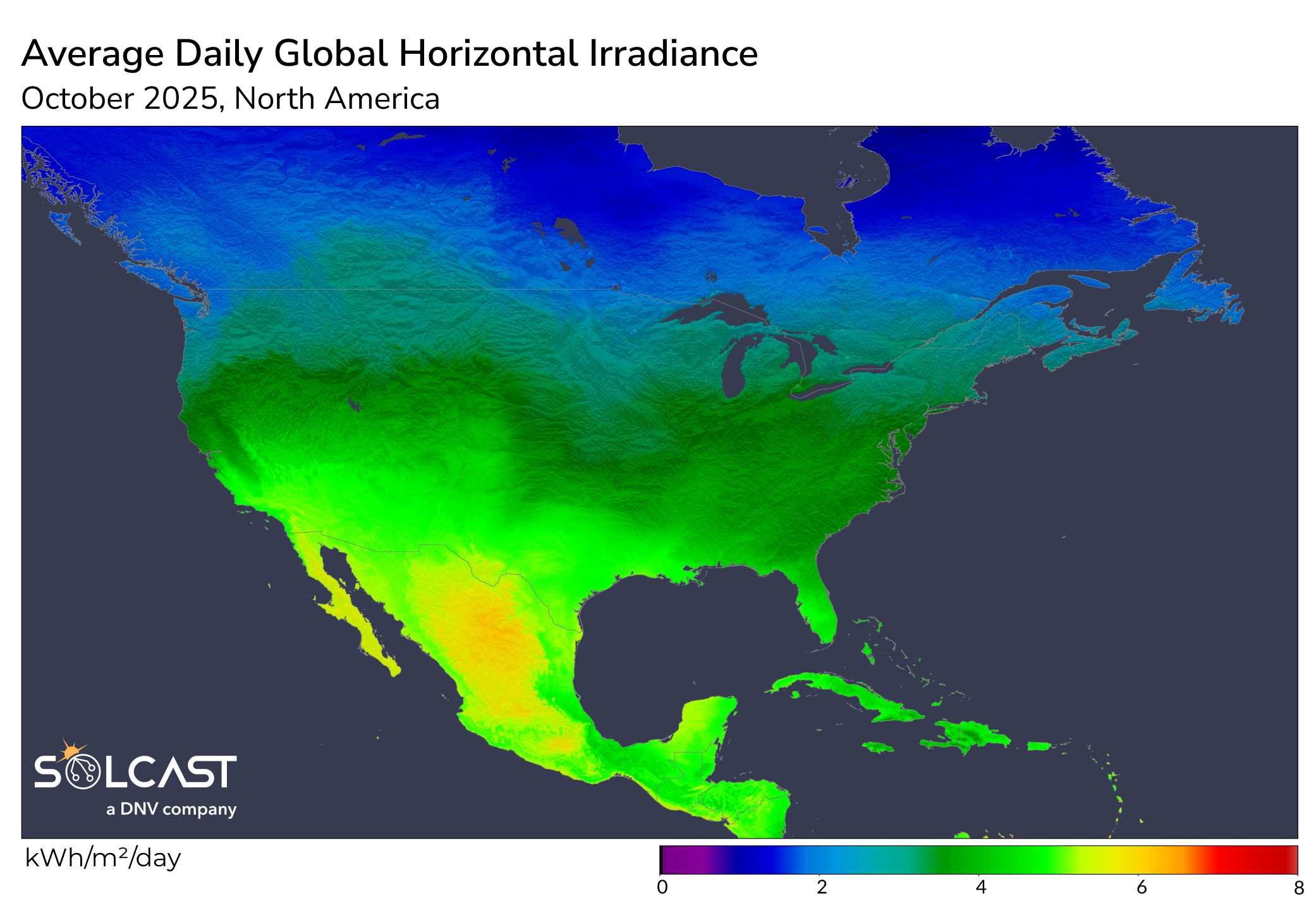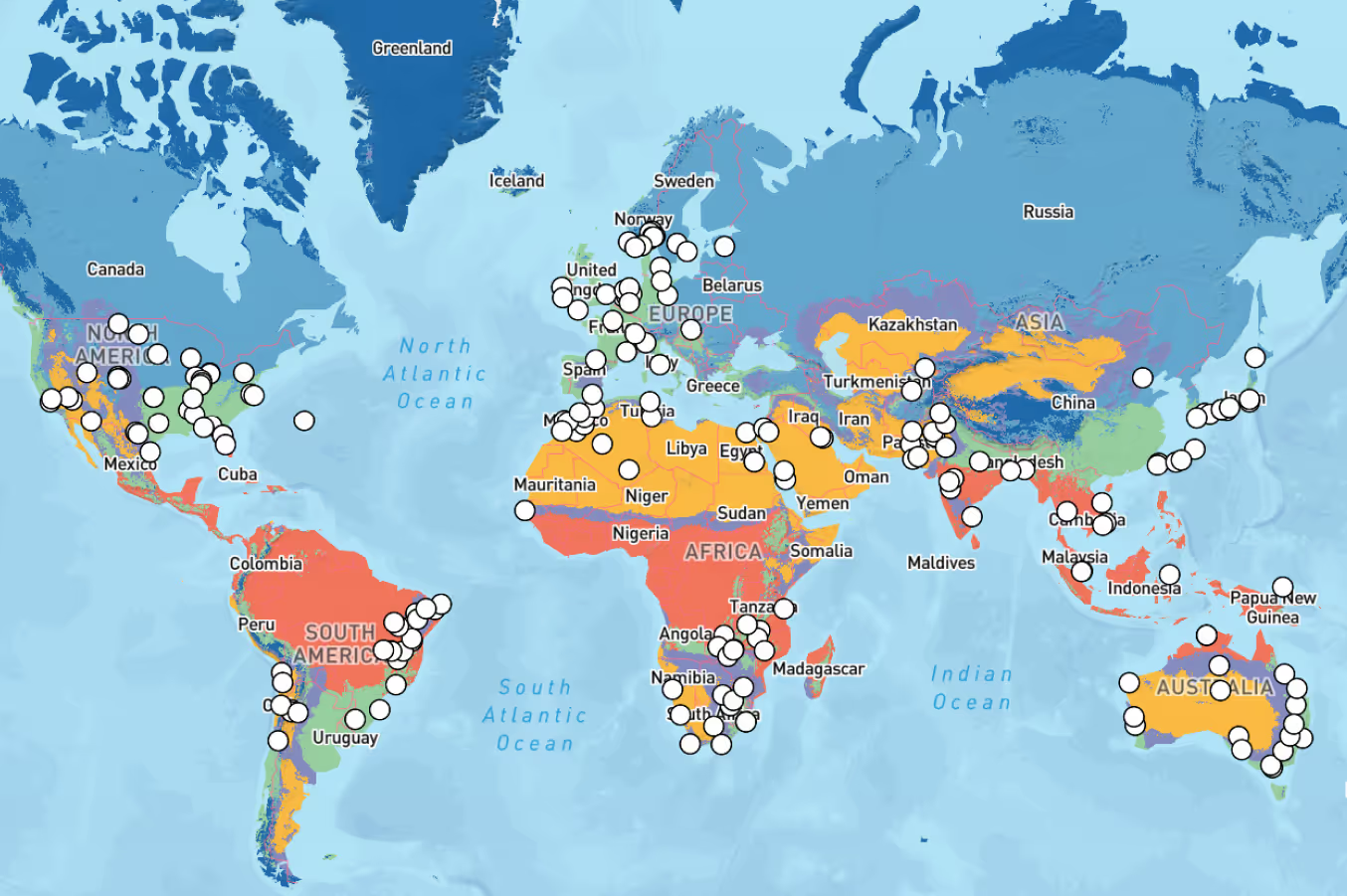North America experienced a highly variable solar performance in October, as a strong high-pressure system boosted irradiance across the eastern regions while cooler, cloudier conditions reduced solar potential in the Pacific Northwest. In the Caribbean, Hurricane Melissa significantly disrupted irradiance levels and damaged infrastructure. According to analysis using the Solcast API, these contrasting regional weather patterns led to a variable month for solar generation across the continent.

A dominant high-pressure system anchored over eastern Canada was the driving force behind elevated solar irradiance in much of the Northeast. The region of high pressure effectively suppressed cloud formation, allowing for consistent sunshine across Ontario, Quebec, and down into the northeastern United States. In areas like New York and Michigan, irradiance levels climbed 20-25% above the typical October values. This sunny stretch extended as far south as Texas and Mexico, where irradiance was up by approximately 15%. The development and persistence of this high-pressure system aligned well with seasonal forecasts, which had predicted above-average irradiance across these regions for the autumn months.
In stark contrast, the Pacific Northwest endured a markedly different October. Temperatures in Washington State and Vancouver ran as much as 4 degrees Celsius below average, accompanied by persistent cloud cover and increased precipitation. These conditions suppressed irradiance levels and curtailed solar performance across the region. Meteorological indicators suggest that this pattern is linked to the early onset of a La Niña-influenced winter, which typically brings cooler and wetter conditions to the northwestern corridor of the continent. The rest of the United States, however, experienced warmer-than-normal conditions, with anomalies of 2-4 degrees above average, under sunnier skies and the influence of a marine heatwave in the Pacific.

Meanwhile, the Caribbean faced a severe disruption to solar production following the landfall of Hurricane Melissa. Striking on October 28th with sustained winds of 298 kilometers per hour, Melissa was the strongest hurricane to hit the region in nearly 200 years. Irradiance across much of the Caribbean fell by 20%, with some areas experiencing prolonged periods of heavy cloud cover and torrential rain. Infrastructure damage was extensive, leaving more than 70% of the affected island without power and triggering widespread evacuations. This came after Hurricane Beryl in July 2024 disrupted grid reliability in Jamaica, prompting a regional push toward resilient energy solutions such as distributed rooftop solar and battery storage.
Track weather conditions, cloud movements, and irradiance-influencing factors that might impact your solar generation. Access bankable actuals and accurate forecasts when you sign up for a Solcast API toolkit. You can reach out to our team for an extended trial.










.avif)


